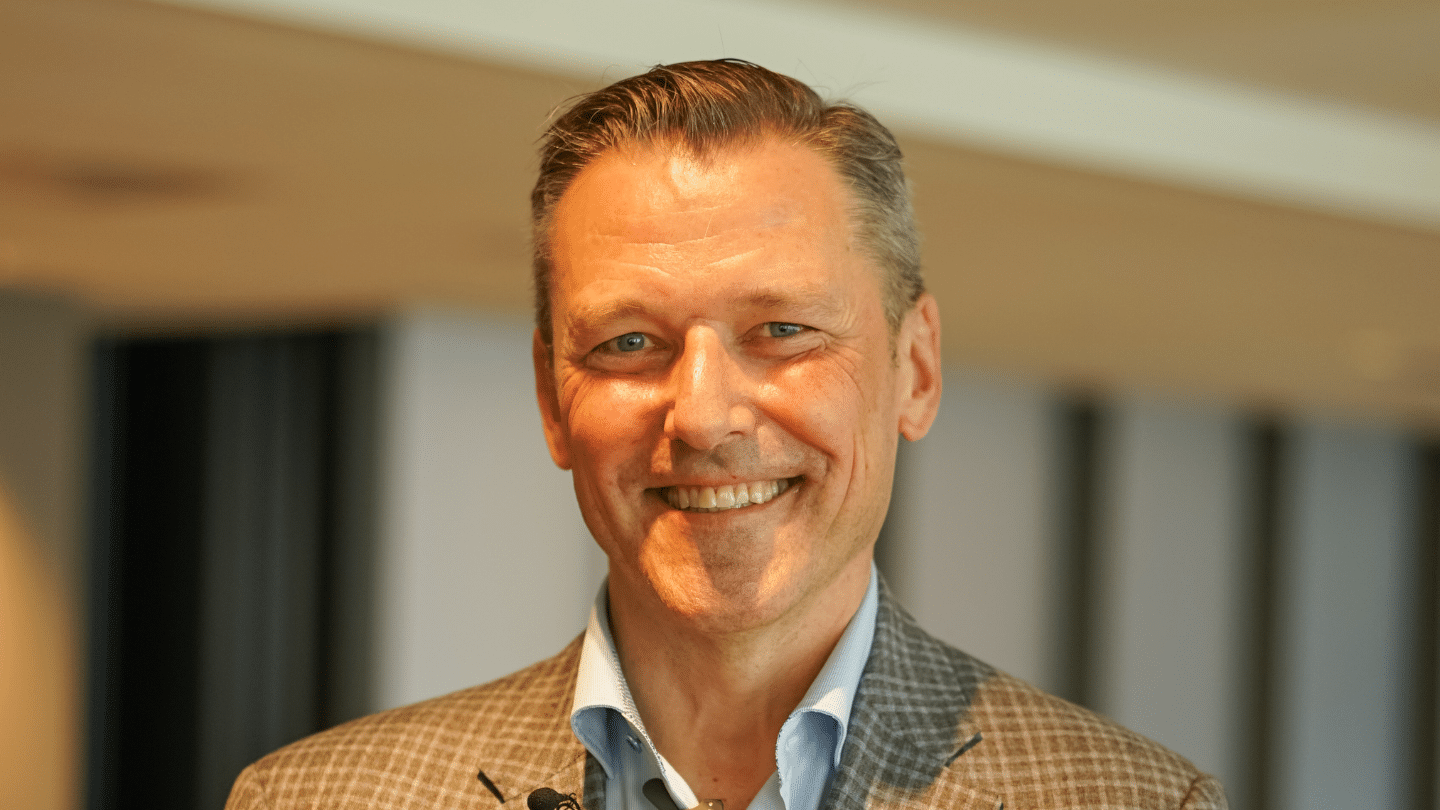
How Jamix is cooking up the future of foodservice tech

For Mikko Jaatinen, founder and CEO of Jamix, it all started in a university dorm room in Finland in 1989. With a borrowed PC and a programming language that required typing coordinates on a blank screen, he built a simple system to help his then-girlfriend manage school dining menus and nutrition planning. That side project would eventually become Jamix, a leading SaaS provider for professional kitchens used by universities and institutions across Finland and the United States.
Today, Jamix is not just a one-person company; it’s scaling globally with Viking Growth as an investor. But the journey has been anything but typical, and for growth-minded CEOs, it’s a story worth investigating.
Lesson #1: Make sure to have product-market fit
Before pitch decks or SaaS pricing models existed, Mikko drove himself across Finland, carrying desktop computers into schools and colleges and demoing his early software.
– I sold almost 40 systems in the first year. Every time I showed it, I sold it, Mikko Jaatinen recalls.
There were no fancy growth hacks, just genuine product-market fit. The approach was lean before lean became a popular framework.
Lesson #2: Nail the problem first, not the pitch
What made Jamix stick? It solved a real-world, painful problem: food service budgets were hard to track and easily exceeded.
– In schools, they were running out of money before the semester ended because they couldn’t track costs. With our system, even a slight price change in an ingredient would update across every recipe. That saved budgets, Mikko explains.
While many startups today build for investors, Jaatinen built for kitchens, and the market responded.

Lesson #3: Build first, fund later
Jaatinen bootstrapped Jamix for nearly three decades, personally running sales, product support, and bookkeeping from the beginning. He built the company one employee at a time, reinvesting profits and supplementing growth with government-backed loans from Business Finland.
– We built Jamix brick by brick. It took time without external investment, but it allowed us to stay focused and independent, Mikko continues.
Jamix had a organization in the US before any external investor joined.
Lesson #4: Physical meetings and local presence are key
The expansion to the US began fully in 2016 when Jaatinen attended trade shows in Chicago and New York. Interest from major institutions quickly followed.
– I met Yale’s food service team at the New York show. They were genuinely excited about what Jamix could do and invited me to visit, he recalls.
Throughout 2017, he made multiple visits and focused intensely on securing the Yale deal. It became clear that a physical presence in the US was necessary. Participation in UCLA’s Global Access Program confirmed that almost every successful market entry required a senior executive to move to the US So, in January 2018, Jaatinen relocated to Boston and worked alone for over a year, attending trade shows and meeting potential customers.
– In early 2019, I met Seth Schrage at the New England Food Show. He came back to our booth the next day, really excited. I realized that this is our guy.
Seth joined Jamix in May 2019. Together, they built the US operation, beginning with technical support hire. From there, the team expanded carefully, often through personal connections. Even before Viking’s investment, Jamix had assembled a strong, values-aligned team in the US
Lesson #5: Understand your edge and double down on it
Jamix has long outperformed larger US competitors, not by outspending them but by out-innovating them. Customers often compared Jamix favourably to incumbents when they entered the US market.
– People would say, ‘Welcome to the 1990s,’ referring to our competitors. Our system looked modern, stood out by being completely cloud-based genuine SaaS, was built for actual users, and was full-featured, Mikko says.
The key differentiator was domain expertise.
– We don’t just sell software. We understand kitchens. I’ve been to hundreds. That shows up in the product and when meeting our customers.
Securing a high-profile reference like Yale was pivotal in building credibility and trust in the US market. With over 30 universities on board now, strong references continue to play a strategic role in Jamix’s growth.
Lesson #6: Focus beats flexibility at scale
In the early days, Jaatinen built whatever customers asked for. Even systems for intermission catering booking at Finland’s National Opera. But with scale came focus.
– In Finland, flexibility helped us grow. But in the US, we had to focus tightly. We defined a clear ICP, being universities, hospitals, and long-term care, and stuck to it, explains Mikko.
Lesson #7: Know when and why to bring in an investor
For decades, Jamix grew without outside funding. Looking back, Jaatinen sees both the value and the cost of waiting.
– I probably waited a little too long, 34 years. Bootstrapping worked, but it carried a lot of risk. Everything depended on me. If we’d brought in an investor earlier, we could have grown faster and with less strain.
The US expansion, while successful, stretched internal resources and impacted their Finnish operations.
– We became overly reliant on US success. An early investor would have helped us maintain and grow our domestic business while entering the US.
Most investors wanted to acquire the entire company, but Jaatinen was looking for a partner, not a buyer. He found that in Viking Growth.
– Viking felt different. They’re from Trondheim and have the same mindset as Finland. They understood who we were, not just what we built.
Viking Growth joined in 2024 with a minority investment to help Jamix scale US operations and complete its sixth-generation platform.
What’s next for Jamix?
With a growing US footprint and strong traction in higher education, Jamix is just getting started. However, global politics and economic uncertainty, especially in US education funding, require careful planning and resilience. Still, Jaatinen remains confident.
– We’ve built the best kitchen management system in the world. Now, we need to get the world to see it.
Final thought for founders
Mikko Jaatinen’s story is a masterclass in long-term thinking, user-centric development, and strategic growth. For founders weighing the trade-offs between bootstrapping and scaling, Jamix offers a rare and honest blueprint: Solve a real problem. Own your journey. Scale with partners who share your values.
More interviews from our portfolio
Gunnar Nordset, Co-founder of Signicat: Lessons from Signicat’s impressive growth: Building a centaur
Terje Wibe, CEO of Mercell on: How Mercell grew by 73 million euros in 5 years
Anne Gretland, CEO of FotoWare on: CEO journey: becoming an international growth company